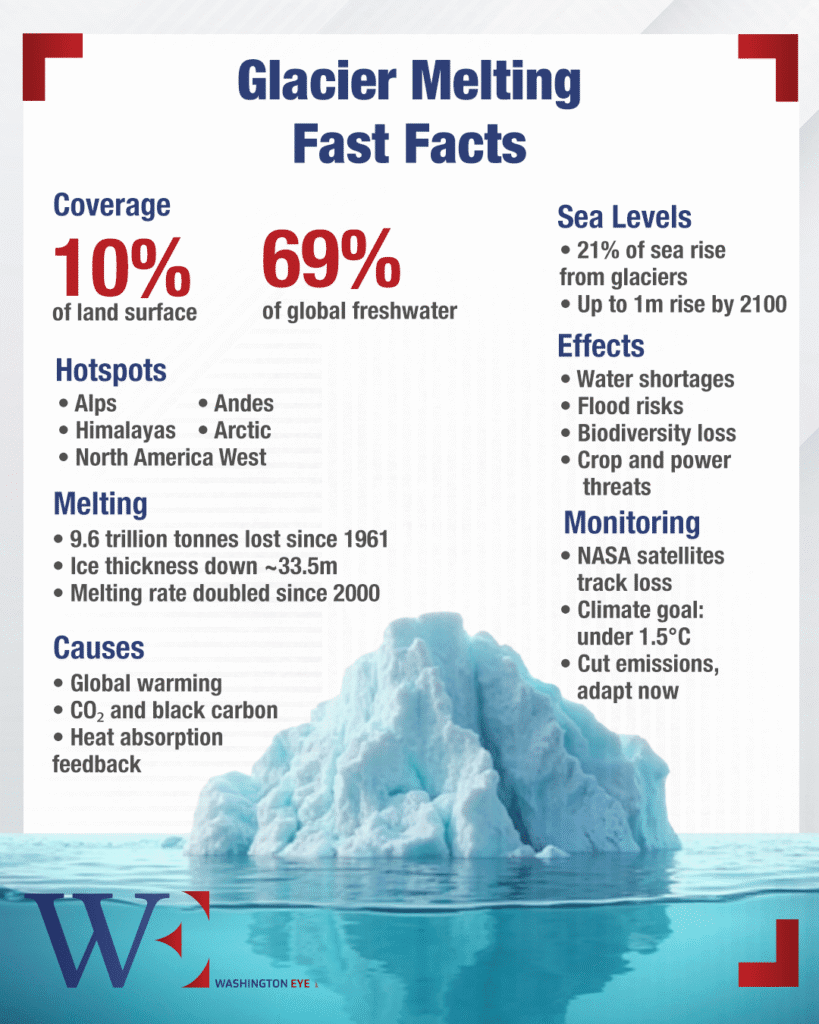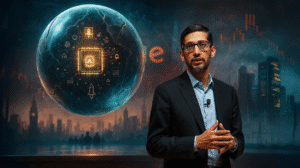Glaciers, the frozen giants that crown our planet’s mountain ranges and polar regions, are vanishing before our eyes. Once eternal symbols of nature’s magnificence, they are now sounding alarms of an impending crisis. From the Himalayas to the Alps, from Greenland to Antarctica, glaciers are melting at unprecedented rates—transforming into a global climate emergency that threatens ecosystems, economies, and human existence.
Scientific consensus is unequivocal: the Earth is warming, and glaciers are among the most visible victims. According to the latest data from the Intergovernmental Panel on Climate Change (IPCC), glaciers worldwide have lost over 9 trillion tons of ice since 1961. The 21st century has seen an accelerated rate of ice melt, particularly due to rising global temperatures caused by greenhouse gas emissions. For many mountain regions, this has resulted in reduced snow cover, seasonal water shortages, and increased risks of natural disasters.
The Himalayas—often called the “Third Pole”—are home to the largest concentration of glaciers outside the polar regions. These glaciers feed major rivers like the Ganges, Brahmaputra, and Indus, which sustain nearly two billion people. Their melting, therefore, does not just represent an environmental issue; it poses a direct threat to human life, food security, and regional peace.
A Chain Reaction of Disasters
The consequences of glacier melting go far beyond the disappearance of ice. Melting glaciers contribute significantly to rising sea levels, which threaten to submerge coastal cities and displace millions. Cities like Jakarta, Mumbai, and even parts of New York and London face existential risks. In 2024 alone, sea levels rose by 3.3 millimeters—a small number with catastrophic implications when accumulated over time.
Moreover, glacier retreat leads to the formation of glacial lakes, which can burst and cause devastating floods—known as Glacial Lake Outburst Floods (GLOFs). Countries like Nepal and Pakistan have already experienced such tragedies. These sudden floods destroy infrastructure, agriculture, and homes, compounding the economic vulnerabilities of already struggling communities.
In regions dependent on glacial meltwater for agriculture and hydropower, the decline in ice threatens livelihoods. Initially, increased melt may cause floods, but the eventual depletion leads to water scarcity—creating a double-edged sword. The impacts are especially harsh in developing nations with limited resources for adaptation and disaster management.
It is critical to recognize that those who suffer most from glacier melting have contributed least to climate change. The Global South, including countries in South Asia, Africa, and Latin America, faces the brunt of climate impacts while bearing minimal historical responsibility for greenhouse gas emissions.
Meanwhile, the Global North, particularly industrialized countries, continues to emit carbon dioxide at alarming levels despite their technological and financial capacity to reduce emissions. This disparity highlights a glaring case of climate injustice. The developed world must take responsibility—not just in words, but through meaningful actions such as climate financing, technology transfer, and supporting adaptation strategies for vulnerable nations.
Hope Through Action
While the situation is dire, it is not irreversible. Limiting global warming to 1.5°C above pre-industrial levels, as outlined in the Paris Agreement, remains scientifically possible. However, it demands urgent and coordinated efforts.
Governments must transition away from fossil fuels, invest in renewable energy, and impose strict regulations on industrial emissions. Public awareness campaigns, education, and grassroots climate movements play an essential role in building pressure for political will.
At the international level, the upcoming COP30 in Brazil must prioritize glacier preservation as a climate priority. Investments in glacier monitoring, early warning systems for glacial lakes, and regional cooperation on transboundary water resources are vital steps. Local communities, especially indigenous populations who have lived sustainably with nature for centuries, should be involved in conservation strategies.
Media plays a powerful role in shaping public discourse and must amplify the voices of scientists, climate activists, and frontline communities. Documentaries, journalism, and storytelling that humanize the impact of glacier melting can help create emotional connections and inspire action.
Moreover, the youth must take the mantle. Around the world, young people have shown unparalleled commitment to climate justice—from Greta Thunberg’s global climate strikes to grassroots movements in the Global South. The future belongs to them, and their leadership is vital in holding governments and corporations accountable.
A Melting Mirror
The glaciers, in their silent retreat, reflect our collective failure—but they also offer a mirror to our humanity. Will we continue to ignore the signs, or will we muster the courage to change course?
As we watch the glaciers melt, we must understand we are not just losing ice—we are losing time. This is not just an environmental issue; it is a moral, social, and existential one. The window for action is narrowing. We must act—before the last glacier vanishes, and with it, the fragile balance of our planet.



















